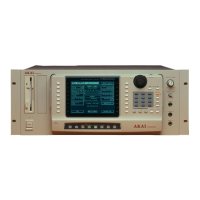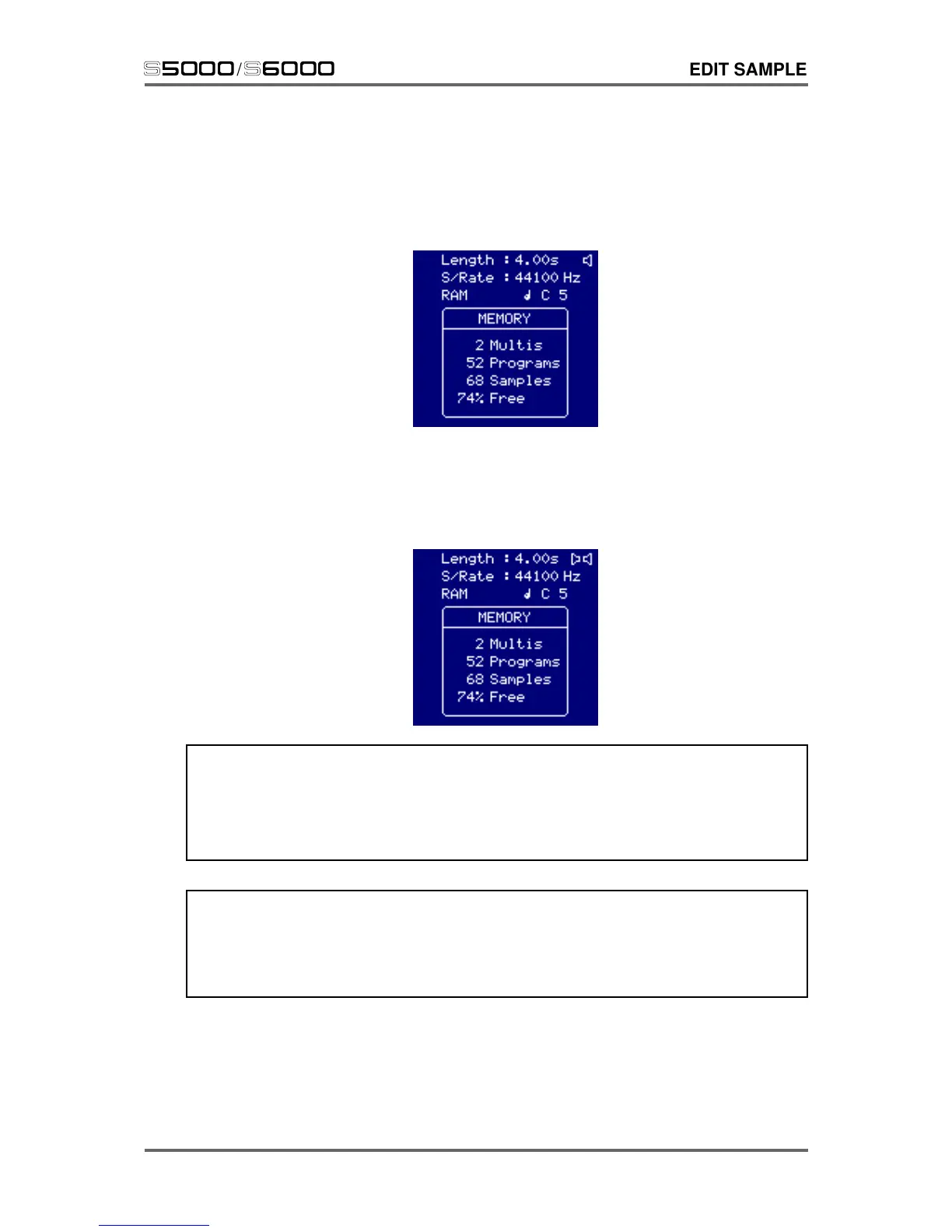Version 1.21 177
s5000
/
s6000
EDIT SAMPLE
STEREO AND MONO SAMPLES
There is little or no distinction made between mono or stereo samples on the S6000 and stereo
samples are treated as one ‘file’ thus you don’t even really need to know what you are editing most
of the time. Mono and stereo files have an indicator after their name in all EDIT SAMPLE pages.
Mono samples are indicated thus:
A single speaker icon is shown.
Stereo samples are shown thus:
NOTE 1: Stereo samples use two voices of the S6000. Thus, if ALL samples are stereo,
polyphony is halved to 64 voices on the S6000 (32 on an unexpanded S5000).
However, it is possible to use a combination of mono and stereo samples simultaneously so
exact figures regarding polyphony cannot be given.
NOTE 2: S1000, S1100, S2000 and S3000 and XL series ‘stereo’ samples (i.e. those appended
with -L/-R) will be treated as mono files on the S6000 and will require individual editing.
If this is inconvenient, you should convert such samples into a single stereo .wav sample using
the CONVERT -L/-R function described on the previous page.

